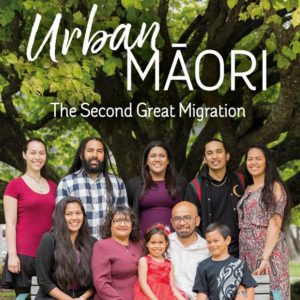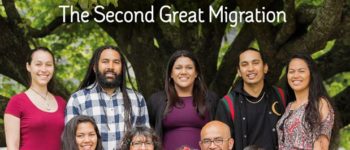1960s: The Second Great Migration
February 28, 2020
By AHNZ
 This is an interesting way of thinking about modern Maori history, The Second Great Migration.
This is an interesting way of thinking about modern Maori history, The Second Great Migration.
For a long time, Maoris continued to live a separate existence and by the turn of the century almost became extinct. By the 1960s the survivors decided to exit their settlements and join the cities Western New Zealanders had built…
“In the course of Urban Māori, a 300-page book being launched next week, Bradford Haami has told many of the stories of what he calls “The Second Great Migration”.
That’s the move which, in the wake of World War One, picked up speed in the 1920s when, according to official figures, 90 percent of the Māori population were still living out in rural, tribal areas.
By the end of World War Two in 1945, 26 percent had settled in towns and cities. That number rose to 35 percent in 1956 — and, 10 years later, was up to 62 percent. Five years ago, 84 percent of Māori were urban, with a quarter living in Auckland.
What was once referred to as a “drift” or a “trickle” had become almost a tsunami — and it’s been followed up with thousands heading for Australia where one in six Māori now live.”
This is an extract from the Prime Minister’s, Norman Kirk’s, New Zealand Day Speech of February 1974. At Waitangi before Queen Elizabeth and the nation, Kirk took the time to observe the journey that the Maori people were on at the time.
After touching on Britain’s turning away from New Zealand to join what we now call the European Union (an act that Britain is now flirting with undoing; ‘Brexit’,) Kirk mentions the Great Migration….
“Maori people, similarly, have not yet reached the end of the road. They are in the middle of a Great Migration as significant and meaningful as the migration that brought them to the shores of New Zealand. As they move from town to country, as the lifestyle changes, as the old traditions and the strength of history and culture are drawn upon, so new legends, new traditions, are in the making. Here in these isles great things are happening. All of us together are on our way. Making New Zealand.”- PM Norman Kirk, New Zealand Day Address (1974)
The time prior the Second Great Migration was not a ‘Segregation Era’ as some historians have now styled it. Not “indentured servants, almost slaves” living in “slums” of “racial segregation.” It was simply the ongoing independent tribal life of a stone age people struggling to flourish as always before. Maori struggled to make their old traditions work in the modern world and found that changes had to be made to lifestyle and tradition in order to survive and thrive.
Kirk and his audience are quite aware of what the Maori People were going though in 1974. Are we as aware of that past or our present?
—
Ref. The second migration: stories of urban Māori; E-Tangata
Update: Added in the clip from Kirk’s speech
Note: Question: “…new immigrants refusing to adopt our culture and instead seeking to impose their way of life on us…”- AHNZ; What’s your heritage? How did your immigrant ancestors respect and adopt tikanga?
Answer: My ancestors did not immigrate into a Maori society, they pioneered their own. When Maoris saw this they left their homes and immigrated to it in a process called ‘The Second Great Migration’. West is best.
 Like Comment Share
Like Comment Share





